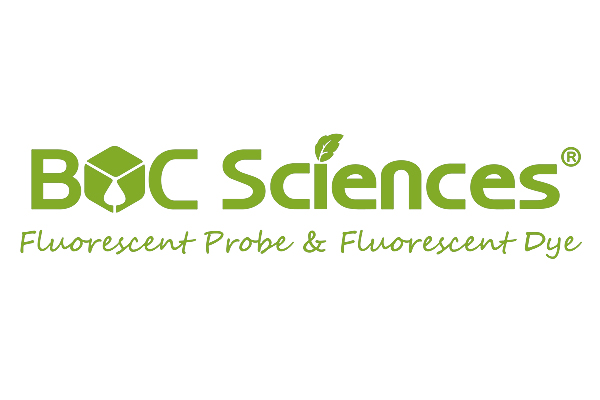
endo-BCN-PEG4-PFP ester | CAS 1421932-52-6
| Catalog Number | R16-0019 |
| Category | BCN Reagents |
| Molecular Formula | C28H34F5NO8 |
| Molecular Weight | 607.57 |
* Please be kindly noted products are not for therapeutic use. We do not sell to patients.
Product Introduction
endo-BCN-PEG4-PFP ester is a versatile ADC linker that enables bioorthogonal click chemistry conjugation. It offers excellent aqueous solubility and controlled payload attachment, enhancing antibody-drug conjugate targeting and therapeutic index.
Chemical Information
Product Specification
Application
Computed Properties
Patents
| Related CAS | 2904607-26-5 |
| Synonyms | perfluorophenyl 1-(bicyclo[6.1.0]non-4-yn-9-yl)-3-oxo-2,7,10,13,16-pentaoxa-4-azanonadecan-19-oate; 2,3,4,5,6-pentafluorophenyl 1-{[({bicyclo[6.1.0]non-4-yn-9-yl}methoxy)carbonyl]amino}-3,6,9,12-tetraoxapentadecan-15-oate |
| Purity | 95% |
| IUPAC Name | (2,3,4,5,6-pentafluorophenyl) 3-[2-[2-[2-[2-(9-bicyclo[6.1.0]non-4-ynylmethoxycarbonylamino)ethoxy]ethoxy]ethoxy]ethoxy]propanoate |
| Canonical SMILES | C1CC2C(C2COC(=O)NCCOCCOCCOCCOCCC(=O)OC3=C(C(=C(C(=C3F)F)F)F)F)CCC#C1 |
| InChI | InChI=1S/C28H34F5NO8/c29-22-23(30)25(32)27(26(33)24(22)31)42-21(35)7-9-37-11-13-39-15-16-40-14-12-38-10-8-34-28(36)41-17-20-18-5-3-1-2-4-6-19(18)20/h18-20H,3-17H2,(H,34,36) |
| InChIKey | SWBZFLVGZRZGCI-UHFFFAOYSA-N |
| Solubility | Soluble in DMSO, DCM, DMF |
| Density | 1.33±0.1 g/cm3 (Predicted) |
| Appearance | Colorless to Light Yellow Oil |
| Boiling Point | 650.9±55.0 °C (Predicted) |
| Storage | Please store the product under the recommended conditions in the Certificate of Analysis. |
Endo-BCN-PEG4-PFP ester, a versatile chemical reagent utilized in bioconjugation and materials science, finds diverse applications. Here are four key applications of endo-BCN-PEG4-PFP ester:
Protein Labeling: Central to biological studies, endo-BCN-PEG4-PFP ester serves as a cornerstone for labeling proteins with an array of probes and tags. By interacting with amine groups on proteins, it facilitates the attachment of various moieties such as fluorescent markers, biotin, or other functional groups. This process is essential for probing protein interactions, investigating localization patterns, and uncovering the functional roles of proteins within intricate biological systems.
Drug Delivery Systems: At the forefront of targeted therapy development, endo-BCN-PEG4-PFP ester plays a pivotal role in crafting sophisticated drug delivery systems. By conjugating therapeutic molecules to antibodies or other targeting entities, it ensures precise delivery of drugs to specific cells or tissues. This targeted approach enhances therapeutic efficacy while minimizing undesired side effects, revolutionizing the landscape of therapeutic interventions.
Surface Modification: In the realm of materials science, endo-BCN-PEG4-PFP ester emerges as a key player in surface modification processes for biomaterials and nanoparticles. Through the attachment of PEG chains to surfaces, it imbues biocompatibility and reduces nonspecific binding of proteins and cells. This capability is indispensable for the development of advanced medical devices, biosensors, and implantable materials that exhibit minimal interaction with the immune system, setting new standards for biocompatible materials.
Cell Imaging: Crucial for cellular imaging studies, endo-BCN-PEG4-PFP ester facilitates the conjugation of imaging agents to cellular proteins and structures, enabling visualization of cellular processes with precision. By establishing stable and efficient linkages, it enables the observation of cellular dynamics using fluorescence microscopy and other cutting-edge imaging techniques. This capability is vital for unraveling cellular mechanisms, shedding light on cellular pathology, and advancing biomedical research endeavors.
| XLogP3 | 3.6 |
| Hydrogen Bond Donor Count | 1 |
| Hydrogen Bond Acceptor Count | 13 |
| Rotatable Bond Count | 20 |
| Exact Mass | 607.22045785 g/mol |
| Monoisotopic Mass | 607.22045785 g/mol |
| Topological Polar Surface Area | 102Ų |
| Heavy Atom Count | 42 |
| Formal Charge | 0 |
| Complexity | 870 |
| Isotope Atom Count | 0 |
| Defined Atom Stereocenter Count | 0 |
| Undefined Atom Stereocenter Count | 2 |
| Defined Bond Stereocenter Count | 0 |
| Undefined Bond Stereocenter Count | 0 |
| Covalently-Bonded Unit Count | 1 |
| Compound Is Canonicalized | Yes |
| Publication Number | Title | Priority Date |
|---|---|---|
| WO-2022120132-A1 | Antibody-oligonucleotide complexes and uses thereof | 2020-12-04 |
| US-2019142906-A1 | Insulin receptor partial agonists and glp-1 analogues | 2016-05-24 |
| WO-2017205191-A1 | Insulin receptor partial agonists and glp-1 analogues | 2016-05-24 |
| US-10953076-B2 | Insulin receptor partial agonists and GLP-1 analogues | 2016-05-24 |
| EP-3922260-A2 | Insulin receptor partial agonists and glp-1 analogues | 2016-05-24 |
Recommended Services
Recommended Articles

- Hoechst Dyes: Definition, Structure, Mechanism and Applications
- Mastering the Spectrum: A Comprehensive Guide to Cy3 and Cy5 Dyes
- Fluorescent Probes: Definition, Structure, Types and Application
- Fluorescent Dyes: Definition, Mechanism, Types and Application
- Coumarin Dyes: Definition, Structure, Benefits, Synthesis and Uses
- Unlocking the Power of Fluorescence Imaging: A Comprehensive Guide
- Cell Imaging: Definitions, Systems, Protocols, Dyes, and Applications
- Lipid Staining: Definition, Principles, Methods, Dyes, and Uses
- Flow Cytometry: Definition, Principles, Protocols, Dyes, and Uses
- Nucleic Acid Staining: Definition, Principles, Dyes, Procedures, and Uses
Recommended Products
Online Inquiry

![2,5-dioxopyrrolidin-1-yl 1-(bicyclo[6.1.0]non-4-yn-9-yl)-3-oxo-2,7,10-trioxa-4-azatridecan-13-oate](https://resource.bocsci.com/structure/2243565-12-8.gif)




